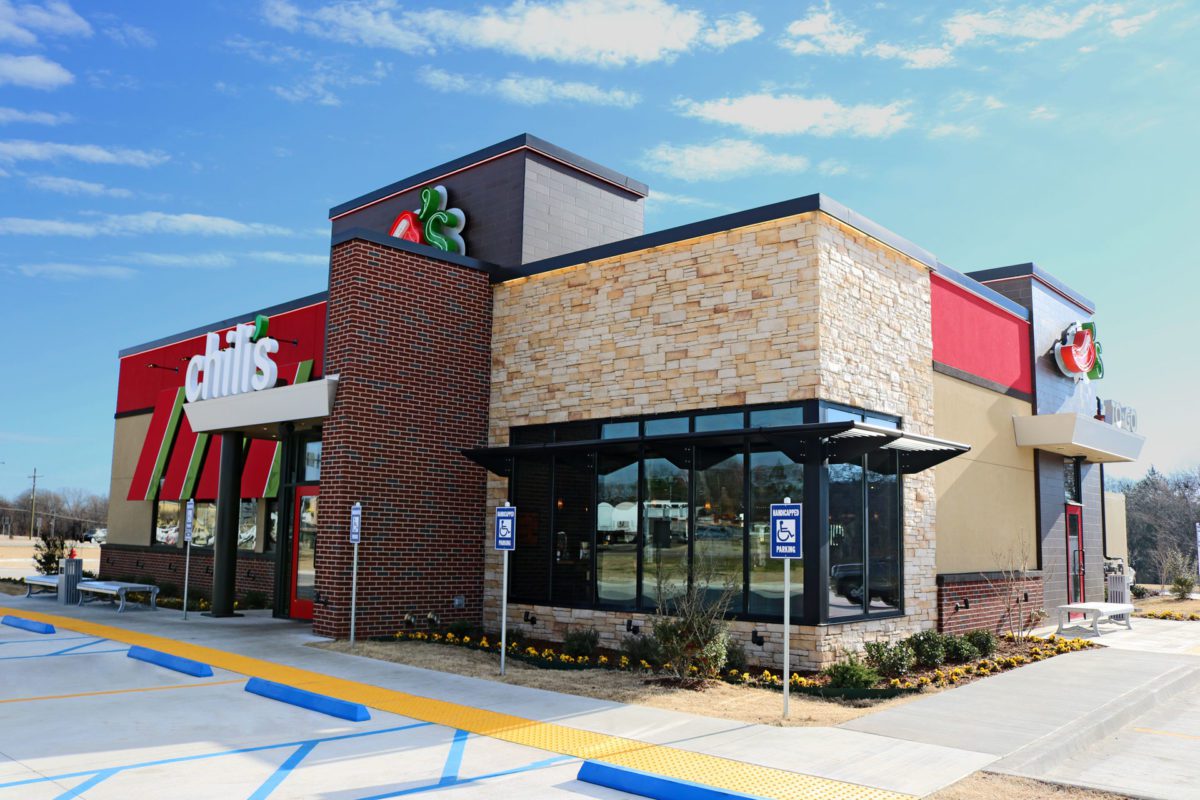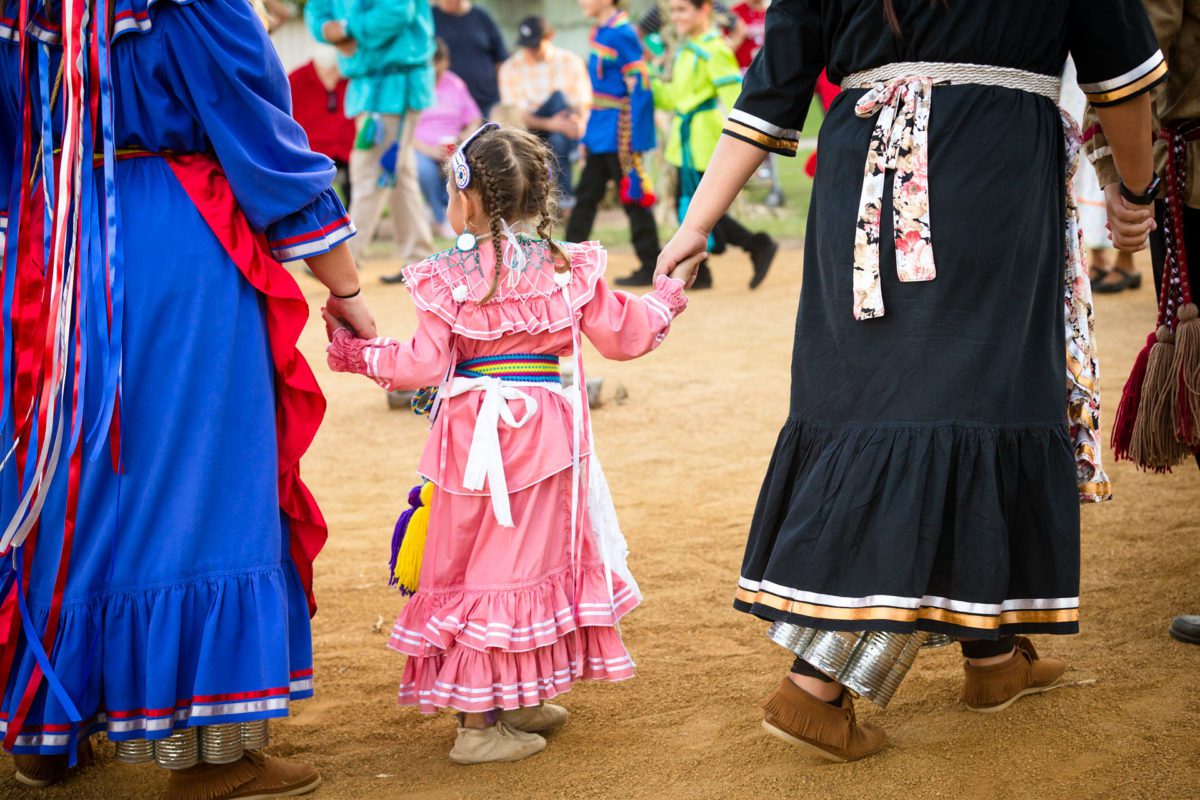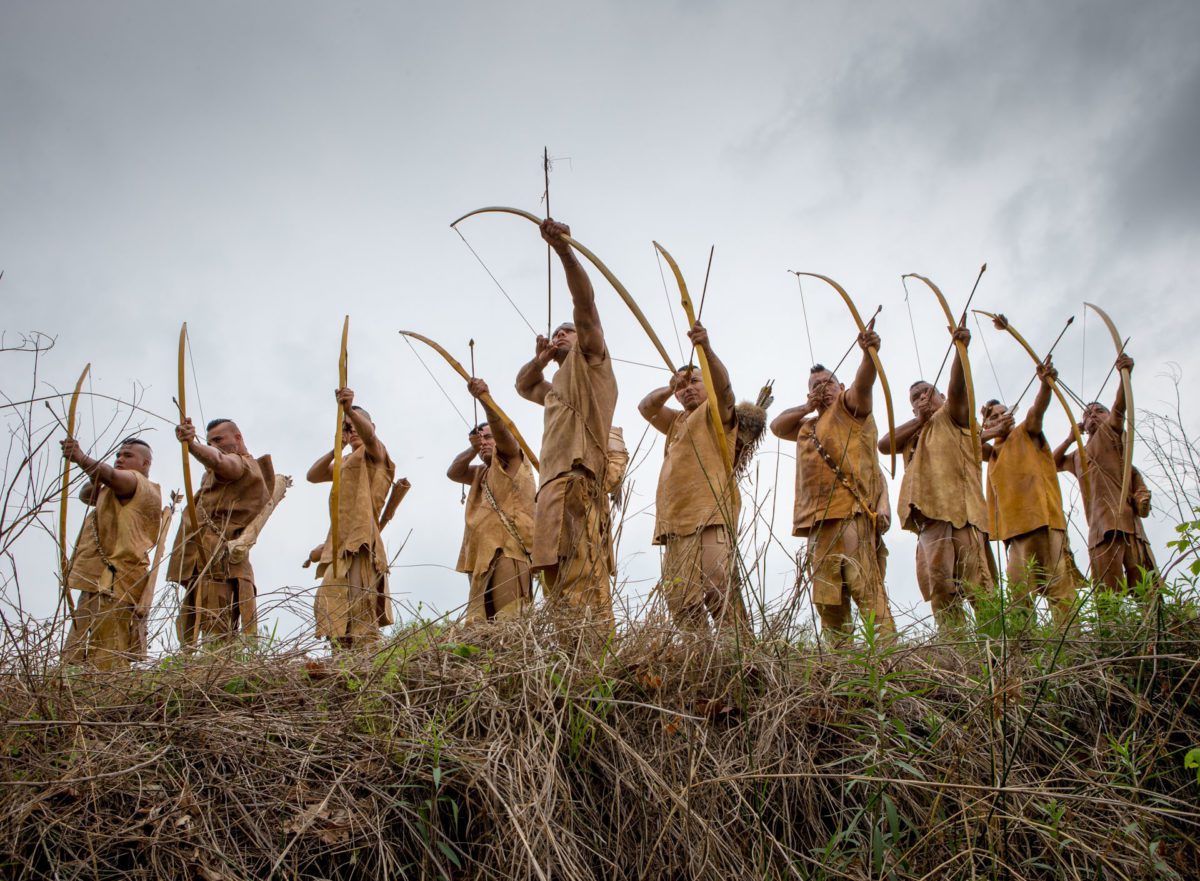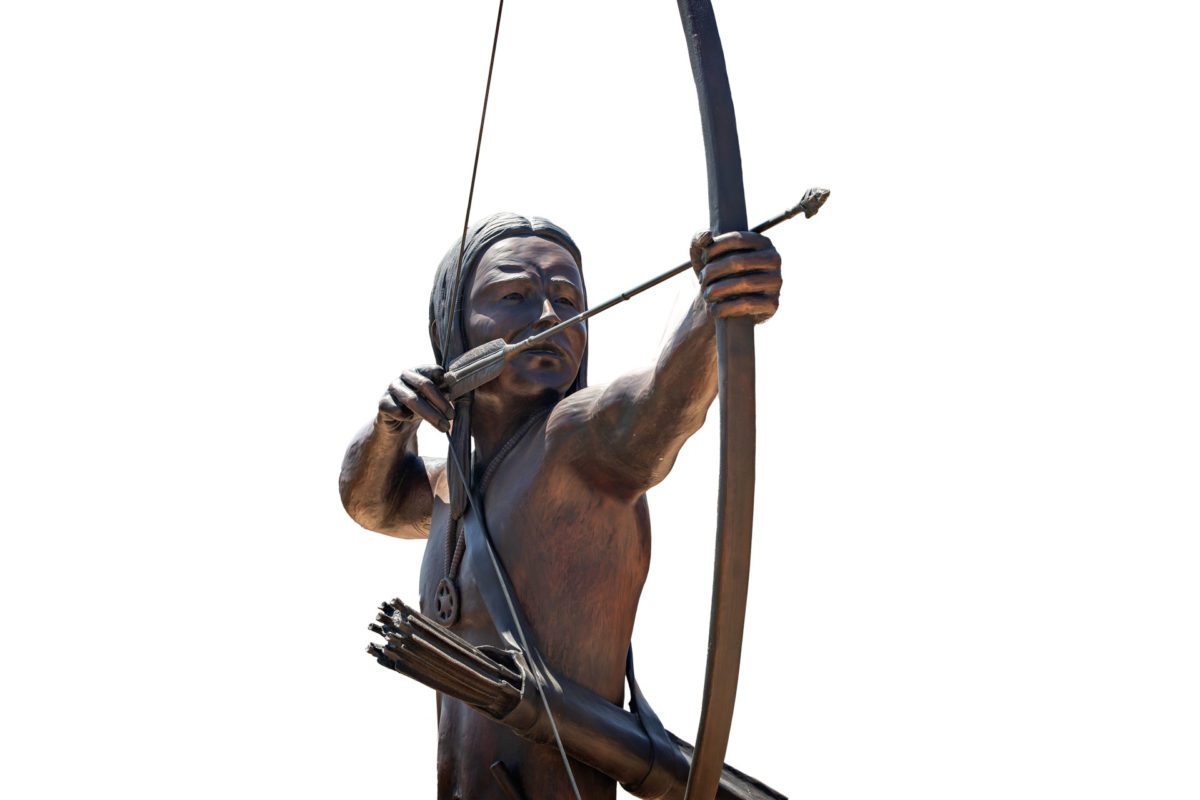Infrastructure Updates
Choctaw Nation
It’s been an exciting summer for the Choctaw Nation, which opened a cultural center on July 23 and will cut the ribbon on a new, 1,000-room hotel tower this month.
Stacey Halfmoon is senior director of the cultural center; she says the 100,000-square-foot center on 22 acres in Durant houses two exhibit halls, an art gallery, an auditorium, a children’s area, classrooms, a gift shop and a café.
“This is the first cultural center for the Choctaw Nation,” she says. “We do have a capital museum in Tuskahoma, and Wheelock Academy has a museum. But as far as a large cultural center, this is the first.”
Choctaw Nation of Oklahoma’s chief, Gary Batton, continues: “The Cultural Center was designed as a living, breathing space that encapsulates centuries of the Chahta Nowvt Aya, or Choctaw Journey.”
Wendy Carter, assistant general manager of Choctaw Casino and Resort, says the Sky Tower project includes an expanded swimming area, additional gaming machines and more restaurants at the flagship property in Durant. It’s a $600 million investment that created more than 1,000 jobs and brings the room count in Durant to more than 1,700.
“The finishes and everything in this hotel are just absolutely modern and gorgeous,” says Carter. “It’s as nice as any resort I’ve ever been to.”
Cherokee Nation
The Cherokee Nation focused last year on Cherokee Springs Plaza in Tahlequah, a retail development anchored by Cherokee Casino Tahlequah. This year, the tribe completed an employee medical clinic at the Hard Rock Casino in Catoosa that is open to all employees and their families, free of charge.
Chuck Garrett, CEO of Cherokee Nation Businesses, says a focus on diversification really paid off during the pandemic “when our casinos shut down for 10 weeks and we were able to pay our employees. Our federal contracting work flourished and set records this year.”
While the go-to business sectors have been gaming and hospitality, many of the 7,500 employees of CNB do consulting work for federal agencies, says Garrett.
“We couldn’t be prouder of the fact that we can provide some really compelling career opportunities for our youth, to provide them a path to pursue the interests they have,” including career fields like marketing, accounting, legal services and human resources.
Citizen Potawatomi Nation
There’s equal enthusiasm regarding new infrastructure among leaders of the Citizen Potawatomi Nation, who have plans for such projects as a columbarium, a child development center and eventually, a new tribal headquarters.
Citizen Potawatomi Chairman John Barrett, now serving a tenth term, says the childcare center in Choctaw will probably be the first new project to get underway. The tribe is also building a grocery store and service station near Asher, and has plans for a new medical clinic in Choctaw.
“We’ve been paying burial benefits for many years, and right now there are more cremations than traditional burials,” says Barrett. “The cost of funerals has become unbelievably inexpensive. It is much less expensive to cremate and hold memorial services.”
Barrett says the Nation plans to build the columbarium near an historic church south of the tribal complex.
Muscogee (Creek) Nation
Citizens of the Muscogee (Creek) Nation “went places we never thought we would have to go to make this Nation work under the blanket of the global pandemic,” says Jason Salsman, the tribe’s press secretary. “We lost so much culture, we lost so much knowledge, and we lost people. But we were able to function and thrive while taking on a landmark supreme court victory.”
The U.S. Supreme Court ruled on July 9, 2020, that the Muscogee Nation’s reservation was never disestablished, and that convicted child rapist Jimcy McGirt should have been tried in federal (rather than state) court. Under federal law, crimes involving Native Americans in American Indian country must be prosecuted by tribes or the federal government.
“Our McGirt response has been incredible,” says Salsman. “We have doubled our cross-deputization agreements to more than 60, including with the highway patrol. We have doubled the number of officers on the ground in Lighthouse Police. We added a criminal investigator, plus five more prosecutors in the attorney general’s office. “
With CARES Act funding, the Nation built a safe space facility where tribal citizens can access essential services in socially-distanced situations, along with a personal protective equipment warehouse that doubles as a disaster response hub.
“Our last big project from CARES funding was the new USDA-approved meat processing facility,” says Salsman. “You can get your beef, pork and venison dressed out and processed there.”
Construction is also underway on a mental health clinic.
“We want to put a big emphasis, especially post-COVID, on mental wellness,” Salsman continues. “We want to put more emphasis on the root cause of problems.”
In November, the Nation will host the Miss USA and Miss Teen USA pageants at its River Spirit Casino in Tulsa, which recently received the hospitality industry’s 4 Diamond award.
“Last but not least, we are very thrilled about the purchase of the former Cancer Treatment Centers of America in Tulsa,” he says. “We will be re-imagining it as a public, specialty-care community hospital.”
Photos courtesy Dana Tiger
Representation in Art
Ben Harjo Jr. is a member of the Absentee Shawnee and Seminole tribes, and his award-winning art is all about his culture. But many of his artist friends are non-Native, and he’s willing to cut them some slack when they find themselves drawn to his world.
“Who am I to tell another artist that they don’t have the right to do this?” he asked.
But there are some taboos that non-tribal members should respect, says OKC-based Harjo, such as painting anything that depicts sacred ceremonies. Non-indigenous artists often “do a good job” of painting Native subjects, says Harjo. For example, he admires the work of his friend Paul Pletka, who extensively researches his works illustrating the Native and Hispanic cultures.
Pletka told a magazine writer: “When I was a youngster and first became enchanted with Indian costume, lore and artifacts, I would sometimes pretend I was an Indian. I soon realized that was not intellectually reasonable. I am not an Indian. I am simply an interpreter.”
Dana Tiger, a member of the Muscogee (Creek) and Seminole nations, says she’s pleased to see a growing number of American Indians finding success with their art. When she launched her career some 35 years ago, much of the work depicting Natives was produced by white artists.
“I didn’t like that they were taking our story, our lives, our ways and making a living with that. It means more when it’s made by a tribal person,” says Tiger, whose gallery is in Muskogee.
Historical depictions of Native Americans weren’t always accurate.
“Some romanticized the Indian,” says Harjo. “They put them in idyllic settings.”
Harjo studied for two years at the Institute of American Indian Arts in Santa Fe, then completed a fine arts degree at Oklahoma State University. He uses the primary colors for his often-whimsical pieces, which he says are designed to lift the spirits of the viewer.
Tiger says her father, the late Jerome Tiger, launched his career in the 1960s and “came up with a style that hadn’t been seen before. He used pastel colors and movement. His work was very new and exciting, and even got people fighting over it. He left a show at Philbrook because the patrons were fighting over his work.”
Tiger says she will always paint scenes that depict her ancestors, but she loves the way Native art combines the historical and the modern.
“I think I see some of the people who are going to replace me really pushing the envelope, opening the doors to their creative interests,” she says.
Bolstering Business
“Educate, empower and engage” is the motto of the American Indian Chamber of Commerce of Oklahoma, which invites Native-owned businesses and tribal leaders to work together to promote the success of Native American people and the communities in which they live.
AICCO provides a format for American Indian entrepreneurs to promote their businesses, and for corporations to connect with these businesses. It also serves as a liaison on tribal economic development issues and offers resources, training and networking.
AICCO encourages mentoring relationships between established and new business owners, says Bailey Walker, AICCO state president.
A number of tribes offer services to their business-owning citizens. The Cherokee Nation Small Business Assistance Center, for example, supports Native-owned businesses by providing access to capital for business start-ups and expansion projects. SBAC also offers business coaching services designed to enhance the operation of small businesses.
Collegiate Incentives
Many of the tribes emphasize career training and offer scholarships and other forms of assistance to those looking to further their education.
Any member of the Choctaw Nation pursuing a degree can apply for a scholarship, payable directly to an accredited college or university. Students can receive assistance while working toward associate, bachelor’s, master’s and doctoral degrees. Students studying for certifications and/or licenses can also contact the Choctaw Nation Career Development Program.
The Muscogee Nation Department of Higher Education administers grants and scholarships to enrolled citizens pursuing a college education. All contributions to the Muscogee Nation Scholarship Foundation Program are tax-deductible to the extent allowed by law.
The foundation’s purpose is to promote self-sufficiency, community participation, self-reliance, self-determination, tribal sovereignty and a sustainable future for Muscogee (Creek) citizens through support of academic scholarships, community initiatives and research that benefit the growth and prosperity of MCN communities.
Preserving Tradition
The mission to keep the tribal language alive began long before the 2007 launch of the Chickasaw Language Revitalization Program. Lokosh (Joshua D. Hinson, Ph.D), director of the program, says tribal members started talking about language loss in the early- to mid-1950s.
“We are building on the efforts of previous generations of Native speakers,” says Hinson. “Every generation picks up this sort of mantle. This is a crew of fiercely determined Chickasaw people, self-determined to keep our language alive.”
The goal is for people to be able to use the language in their daily communications. The Nation does not want to preserve the language just as an artifact, or just for ceremonies, says Hinson. But fluency is not the only objective.
“People’s lives are enriched when they engage with the language in serious ways,” he says. “Relationships are strengthened across families. Language is a gift from the Creator.”
Language training is offered on platforms ranging from in-person classes to smart phone access.
“We are always searching for ways to meet people where they are,” says Hinson. “People want short, accessible micro-lessons, short videos delivered by social media.”
Only about 120 Native speakers remained when the program was launched, and today there are likely fewer than 40.
“When you are staring down fewer than 40 speakers,” says Hinson, “you have to get good, and have to do it quickly.”
Tribal Gov. Bill Anoatubby is a “fierce language advocate,” Hinson continues. “We want to create not only a new generation of speakers, but a more language-aware workforce. They can use those newfound language skills for the betterment of everyone in the Nation.”
The Importance of Cultural Events
The Cherokee National Holiday returns this year as a hybrid celebration, featuring virtual and smaller-scale live events. The 69th annual event happens on Labor Day weekend, and this year will mark the 200th anniversary of Sequoyah’s invention of the Cherokee syllabary.
In-person activities will include the Tahlequah art market, drive-in movie nights, gospel singing, fiddlers contest, State of the Nation address, car and quilt shows and a fireworks show. Livestreamed events include stickball, historic site tours and an outdoor powwow.
The Cherokee National Holiday commemorates the signing of the Cherokee Nation Constitution in 1839, which re-established the tribe’s government in Indian Territory after forced removal from the original homelands.
Phil Dupoint, president of the board of the American Indian Exposition in Anadarko, says the expo is scheduled for Aug. 18-21 at the Caddo County Fairgrounds.
Events will include softball and basketball tournaments, a carnival, tribal and competition dancing, arts and crafts booths and food vendors.
“It’s just a gathering of all the tribes,” says Dupoint. “They all come together and can share their cultures and their traditions with one another, as well as the public, so everybody has a better understanding of us.”
Small but Mighty
Numbers don’t always tell the story. Many of the 39 tribes in Oklahoma have only a few hundred or few thousand members, yet they work to provide many of the services offered by tribes with hundreds of thousands of members.
Cultural preservation is a priority. The Kaw Nation’s website features a lengthy historical narrative that commences with the creation story and continues through 2011, when the constitution was revised. The Miami Tribe’s history describes how the cycles of planting, harvesting, hunting, gathering and processing sustained the people for generations when they lived in the Wabash River Valley.
Throughout the pandemic, leaders of the Apache, Comanche, Caddo, Pawnee and other tribes and nations kept their websites updated about medical and economic assistance, even when the offices had to be closed.
Tribes such as the Ottawa and Absentee Shawnee offer activities including quilting, youth camps, field trips, powwows and stomp dances.
Education and career training is another prime concern for the smaller tribes, with the Kickapoo offering everything from resume assistance and GED preparation to higher education incentive programs.
Indigenous Peoples’ Day
Citizen Potawatomi Nation Chairman John Barrett says it’s a great gesture that cities and states across the nation have begun to observe Indigenous People’s Day, but he’s not so keen about celebrating it on Columbus Day.
“For the next 25 years, people will say that it’s on the day that used to be Columbus Day,” he says. “So, it’s still memorializing him.”
As a tribe, Barrett says, “we don’t close for Columbus Day, never have. They should call it Lost Italians Day.”
Oklahoma City, Norman, Tulsa, Tahlequah and Anadarko are among the cities that hold ceremonies. In 2019, the Oklahoma Legislature passed Senate Bill 111, which changed Oklahoma Native American Day from the third Monday in November to the second Monday in October.
“All citizens of this state are requested to devote some portion of Oklahoma Native American Day to commemorate the accomplishments of Oklahoma’s Native Americans,” the bill reads. “Teachers and students of the schools of this state are requested to observe the day with appropriate activities.”
Summer Wesley, Choctaw Nation citizen, is an attorney and a board member of Live Indigenous OK. She views this date designation as an important statement.
“Observing Indigenous Peoples’ Day on a day in which others celebrate the genocide that began with Columbus is important, because it’s a message of hope and of humanity,” she says. “Indigenous Peoples’ Day is a small way that we remind people that we are still here, and it helps us unify and celebrate our ongoing efforts to survive and thrive under this continued colonial occupation.”
Cheyenne and Arapaho tribal governor Reggie Wassana agrees.
“I think it’s a really good gesture that the cities and municipalities recognize that the Native people were the first people in the United States,” he says. “Any time people come out and say we were the first Native people on the land and acknowledge that – that’s good.”

































